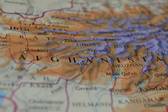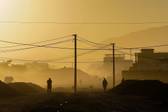Countering Violent Extremism Through Conflict-Sensitive Journalism
STRIVE Afghanistan Practitioner Summary
Journalists can play an important role in responding to violent extremism. Reporting on the historical, structural and personal factors linked to recruitment into violent extremist organisations can help societies better understand conflicts and their drivers. Journalists can also play many roles in addressing these factors: informing audiences about the nature of conflict, advocating for social change, providing a bridge and means of communication between communities, and proposing policy changes. This can ultimately contribute to the development of peaceful solutions to many social and political forms of conflict.
Journalists face many challenges that limit their scope of reporting. They operate in a political environment, are part of a business or public interest organisation, and are expected to meet editorial standards, all the while working within very real resource constraints. In conflict-affected contexts where media freedom is curtailed by state and non-state actors, journalists frequently face daily challenges to their physical safety and mental health. To retain their function, it is imperative that media and journalists retain a degree of autonomy from governments and other groups capable of monopolising violence over certain areas for their own interests.
Promoting Conflict-Sensitive Journalism
Mainstream news reporting about conflicts often reflects a ‘war journalism’ perspective, or a violence-oriented, zero-sum framing where two antagonistic parties contest the single goal of victory. Such reporting can render audiences cognitively primed for violent responses, contribute to escalation narratives, and minimise understanding of the causes and possible exits from conflict. Conflict-sensitive journalism, by contrast, prioritises fairness, accuracy, impartiality and responsibility. With a knowledge of the forms of conflict underpinning violent extremism, journalists can expose the actors and history involved.
- In total, 20 journalists from Afghanistan and 10 journalists living in Pakistan received this training and mentorship.
- Within the training cohort, two-thirds of the journalists actively engaged in the mentorship sessions, while nine journalists engaged in at least 50% of the sessions.
- A detailed internal content analysis of the uptake of conflict-sensitive journalism principles was conducted. Journalist outputs were reviewed before and after the training and content was coded against the core principles of ‘war journalism’ – or violence- and victory-oriented reporting – and ‘conflict-sensitive journalism’. The analysis found that before the training, articles written by trainees exhibited 23% ‘war journalism’ and 21% ’conflict-sensitive journalism’. After the training, their work was analysed again and was found to exhibit only 5% ‘war journalism’, with ’conflict-sensitive journalism’ indicators rising to 57%.
- Throughout the programme, journalist trainees published a total of 84 news stories through their respective media outlets.
Related Practitioner Summaries
Project sponsor
Funded by the European Union
The research on which this summary is based was funded by the European Union. The contents are the sole responsibility of the authors and do not necessarily reflect the views of the European Union. The European Union holds full copyright for the text of this summary.








